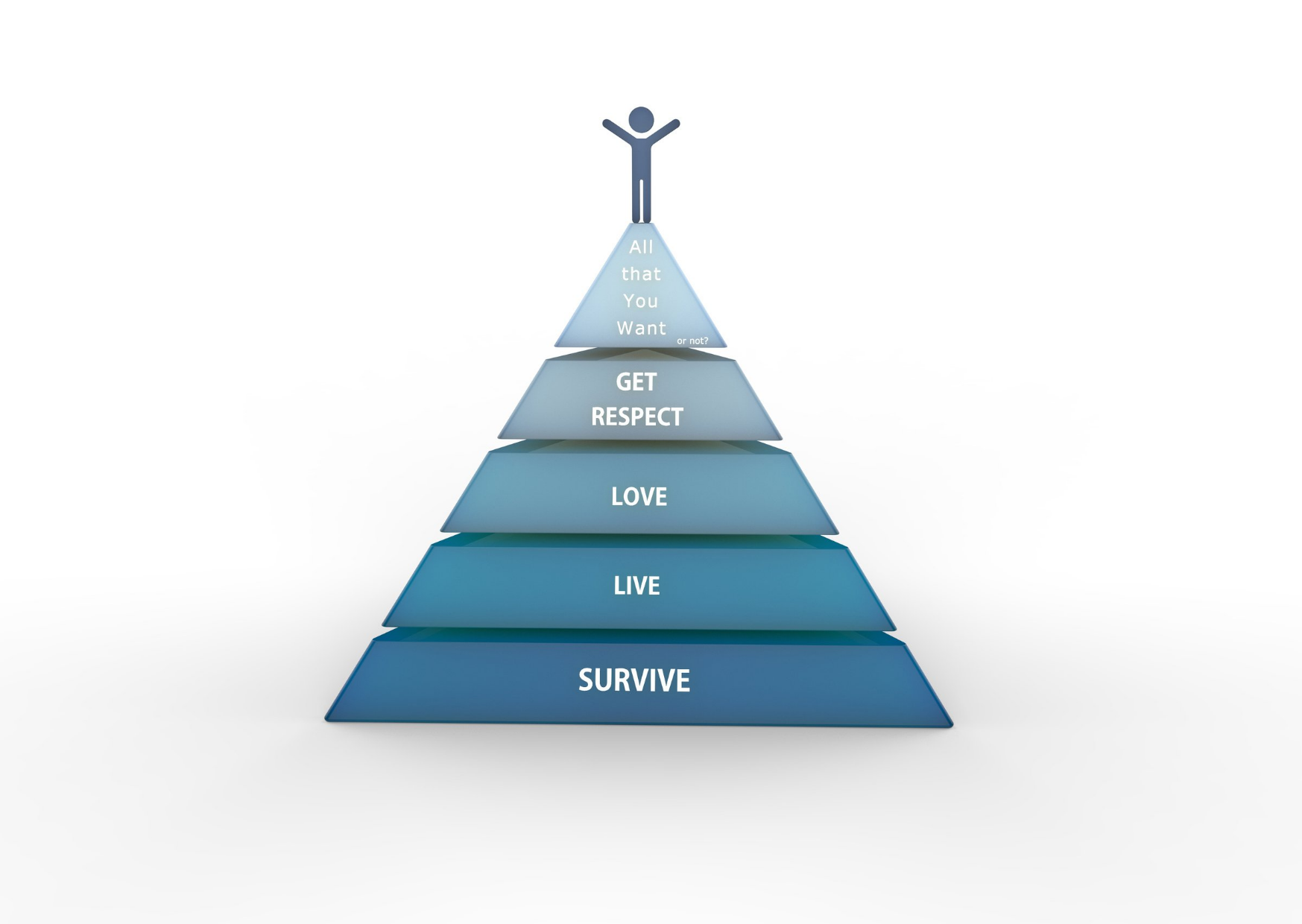Maslow’s Pyramid applied to the business world
Companies are constantly looking for work tools, organizational structures and systems capable of increasing productivity, improving performance and increasing turnover. Many studies have shown that one of the keys to achieving these goals lies in increasing and maintaining high the employees’ motivation.
Is there a way to quantify a collaborator’s motivation?
Thanks to the American psychologist Abraham Maslow, since 1954 it has been possible to measure a person’s motivation. Maslow, in fact, has created a motivational model of human development based on a hierarchy of 5 basic needs arranged in a pyramid, this model is called “Maslow’s Pyramid”.
It seems that the human being unconsciously seeks to satisfy these needs according to the sequence indicated by Maslow. When basic needs are met, the instinct is to move up the hierarchy to meet the top of the pyramid.
The knowledge of this tool can be fundamental for companies that want to understand both the dynamics and the behaviours of collaborators in the business context. In fact, learning to know and understand the mechanisms that regulate professional relationships, allows companies to intervene in a concrete way to regulate the dynamics within the company.
Here is how the Maslow’s model was born and what its benefits are.
A reference model for companies for over 70 years
Since the 1930s, various studies have flourished on the behaviour of social groups, up to the attention of companies and organizations in the first post-war period. In those years, companies were called to adapt to a changing market and to a society that quickly brought out new needs and new consumption. Competition was beginning to take on a whole new aspect and companies had to find ways to make their staff work with increasing quality and high productivity rates. This is how companies began to seek more effective skills, abilities and motivational levers to stimulate their employees to perform better.
A real school of thought was therefore born aimed at finding winning solutions to exponentially increase the motivation of all employees, from blue-collar workers to management levels, and consequently to increase profits.
It is within this context that Abraham Maslow published “A Theory of Human Motivation”, a text that is still a reference model for scholars, since it places in increasing order the needs that each individual must meet, listing them in a hierarchical manner and therefore in order of priority. Observing the organizational context through the Maslow’s scale of motivation, it is possible to shed light on the behavioural dynamics in the business world.
The levels of needs of Maslow’s pyramid applied to companies
Level 1 – PHYSIOLOGICAL (base of the pyramid)
These are the basic needs related to the physical survival of the individual, such as breathing, sleeping and eating. In the world of work this level is related to basic survival needs such as salary.
Level 2 – SAFETY
These are the needs that refer to having stable employment, which in turn guarantees family stability. The company is therefore an important pillar in the life of individuals. If employees feel protected and on solid ground and if they work in a context that allows them to freely think about future projects in the private life, the loyalty for the company will be greater, with all the benefits that this brings.

Level 3 – BELONGING
To be loved and to love, to be part of a group, to cooperate, to participate, these are the aspirations of every human being, who by nature needs to feel part of a community.
For companies, this translates into building a relationship of mutual trust with their employees. If each person has his or her place in the company, feels respected and considered as part of the team, results will be greater and corporate profits will inevitably be higher. There are many advantages of a healthy working environment, both for the employee and for the company.
Level 4 – ESTEEM
Each individual desires to feel valued and appreciated by the people around him and to feel secure in his truths and beliefs. When people are confident in their life context, they are more positive. In the same way, if the employee is inserted within a context in which he feels gratified and for which he is suited to, he can only generate positive results.
Level 5 – SELF-ACTUALIZATION
Morality, creativity, spontaneity, problem solving, social acceptance. It is about the realization of personal potential, the desire to “become all that one is capable of becoming”.
Self-fulfillment in the world of work corresponds to autonomy in the workplace, the quality of professional commitments and the specialization of skills.
Why does Maslow’s theory work?
Maslow claims that the needs of a human being constantly change, when a need is met, something else is desired.
Will the salary increase received two years ago motivate us for ten years?
Are the energies we have given to work in the last 10 years the same that we want to use in the next 10 years?
Maslow’s theory works because the pyramid follows the evolutionary process of the individual, it is an instrument in motion as is the life of the person. It is therefore essential to take this into account also in the management of personnel in companies, in order to adapt the evolution of the employees in the company with their basic needs.
